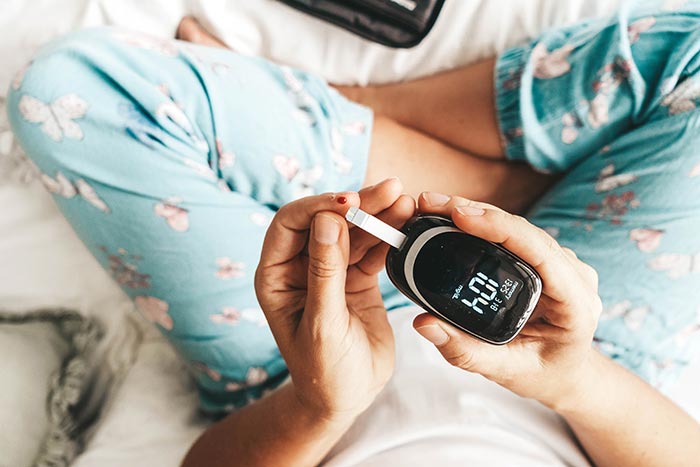During November we often think of turkey, stuffing and mashed potatoes. Ironically, the month that we often overeat and celebrate Thanksgiving is also Diabetes Awareness Month. Over 29 million Americans are living with diabetes, which is about 1 in 11 individuals. Type 2 diabetes is a disease where blood glucose (sugar) levels are too high, which if not managed can result in serious health complications. Although, diabetes is an equal opportunity disease impacting both men and women, there are a few risk factors that are specific to females.
Listen up! This is your health we’re talking about! These are the top five Type 2 diabetes risk factors that women should pay attention to:
PCOS
Polycystic Ovarian Syndrome— a condition that causes cysts on the ovaries and is characterized by irregular menstrual periods, excess hair growth, acne and obesity is also a risk factor for Type 2 diabetes.
Gestational Diabetes
Did you have a child that weighed more than 9lbs at birth or were you diagnosed with gestational diabetes during pregnancy? You may be at higher risk for developing Type 2 diabetes within the next five to seven years.
Body Shape
Being overweight increases the amount of fatty tissue, which increases the body’s insulin resistance—making it difficult for for the body’s cells to use insulin, the hormone involved in blood glucose regulation. While being overweight is a risk factor, where women distribute extra weight can also make a difference. If your body primarily stores fat in the abdomen (apple shape) versus in other locations like your hips and thighs (pear shape) than you are at higher risk for developing Type 2 diabetes.
Activity Level
Physical activity is like free medicine for your body! Incorporating regular physical activity can help with weight management, helps lower blood glucose levels and improves insulin resistance. If you’re a woman who isn’t regularly active, you are at higher risk for Type 2 diabetes.
Family History
If you’ve had a parent that has or had Type 2 diabetes you are at higher risk for developing it yourself.
If you are at higher risk for Type 2 diabetes and/or have already been diagnosed with Prediabetes, a condition where your blood glucose levels are high but not yet high enough to be diagnosed with Type 2 diabetes, there are action steps you can take to reduce your risk:
#1. Get Active
Small amounts of regular physical activity at least 150 minutes a week can help reduce your risk of Type 2 diabetes. Focus on incorporating activities that you enjoy.
#2. Focus on a Healthy Diet
Swapping the sodas for seltzer and filling ½ your plate with vegetables are two simple ways to improve your food and beverage choices. Remember even small dietary changes can make a difference.
#3. Aim for a Small Amount of Weight Loss
Small amounts of weight loss can make a big difference in reducing your risk. If you are overweight, aim to lose about 5% of your current weight. For example, if someone weighs about 200lbs, their weight loss goal should be a weight loss of 10lbs.

Alison Massey
Alison Massey is a registered dietitian (RD), certified diabetes care and education specialist (CDCES), and freelance writer. She's been working in the field of nutrition for more than 15 years helping individuals make sustainable changes to improve their health. When she's not writing you can find her basking delicious recipes or exploring the Chesapeake Bay in Southern Maryland where she resides.


























Thanks for sharing!!